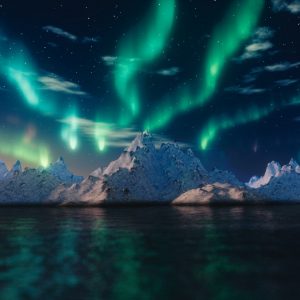You don’t need a telescope or binoculars to watch this light show. The best viewing takes place under clear cloud-free skies in areas with little pollution. The phases of the moon are an issue. Bright full moons can fade out the Northern Lights.
Fortunately, Labor Day weekend has a crescent moon. And the Full Harvest Moon won’t appear till September 11th.
Check local weather forecasts as well, because you won’t be able to spot the aurora through the clouds. And keep in mind city lights can fade out lower-intensity auroras.
What are the Northern Lights?

The Aurora Borealis are more commonly known as the Northern Lights. They are the result of atmospheric interactions between the Sun and Earth’s outer edges.
The Sun’s electrically charged ions become trapped and interact with the Earth’s ionosphere. The ionosphere is about 60 to 80 miles above our planet’s surface. This causes the ions to light up or glow.
It’s the same principle that lights up a neon sign. Electrons passing through the neon tubing glow. And that’s what produces the light in a neon sign.





